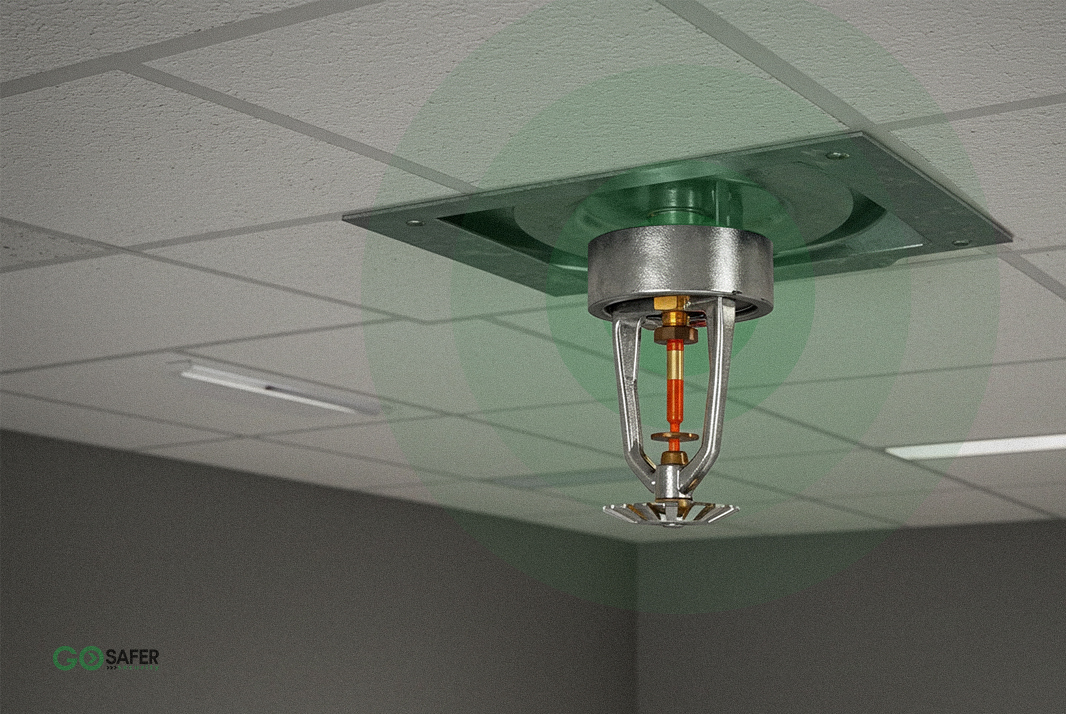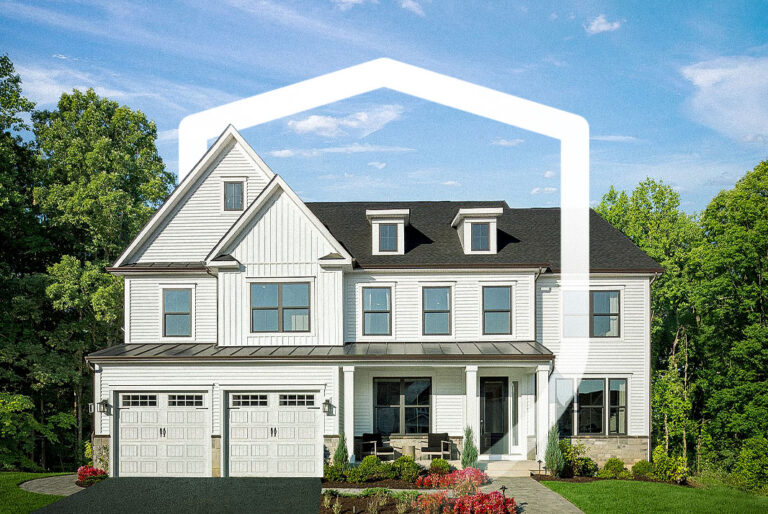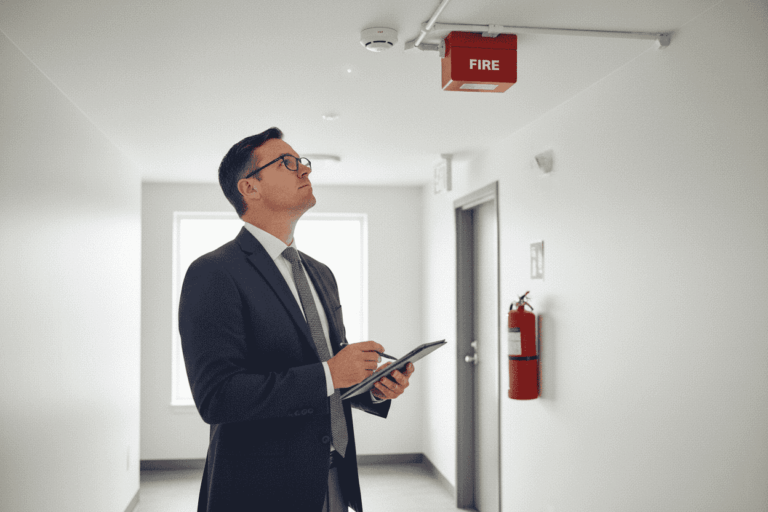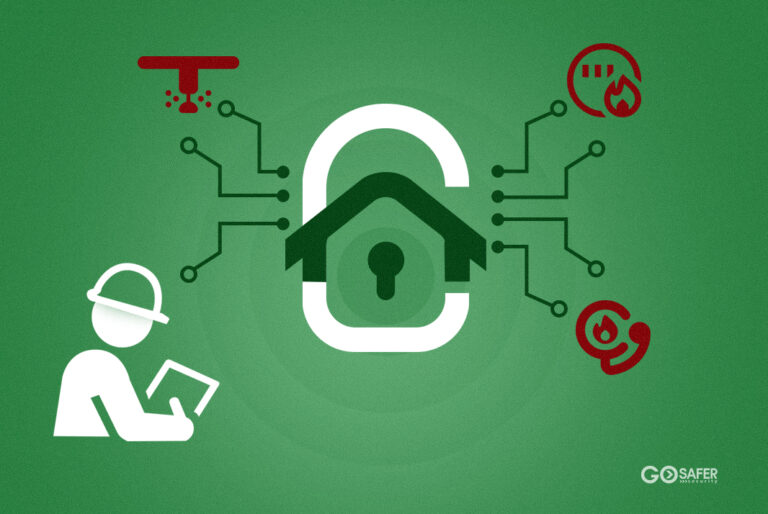A fire sprinkler system is one of the most effective fire suppression tools in commercial and residential buildings. However, without regular maintenance, it may fail when you need it most. Many building owners ask, “How often should fire sprinkler systems be inspected?” The answer depends on factors like local fire codes, system type, and industry regulations.
This guide will break down inspection schedules, testing requirements, and fire sprinkler system maintenance best practices to keep your system in top condition.
Table of Contents
ToggleWhy Fire Sprinkler System Inspections Are Critical
Ensures Compliance: Fire codes and NFPA (National Fire Protection Association) regulations require routine inspections to avoid fines and legal consequences.
Prevents System Malfunctions: Regular maintenance detects leaks, corrosion, or blockages before they become major issues.
Extends System Lifespan: A well-maintained automatic fire sprinkler system can last for decades.
Reduces Fire Damage: A properly functioning system can control or extinguish fires before they spread.
Protects Lives & Property: In the event of a fire, sprinklers activate automatically, giving people more time to evacuate safely.
How Often Should Fire Sprinkler Systems Be Inspected?
The NFPA 25: Standard for the Inspection, Testing, and Maintenance of Water-Based Fire Protection Systems sets specific guidelines for sprinkler system inspections. Below is a recommended fire sprinkler inspection schedule:
1. Weekly and Monthly Inspections
Alarm Valves & Gauges: Ensure pressure readings are within the required range.
Control Valves: Verify that valves are in the open position and not obstructed.
Fire Pump Systems: Run a test if applicable to ensure operational readiness.
2. Quarterly Inspections (Every 3 Months)
Alarm Devices: Test bells and horns to confirm they activate when needed.
Water Flow Switches: Ensure the system detects water movement and triggers alarms correctly.
Valve Tamper Switches: Check to see if valves are tampered with or changed position.
3. Annual Inspections (Once a Year)
Full Sprinkler System Check: A licensed professional should perform a comprehensive evaluation of all components.
Pipe Corrosion & Leaks: Inspect pipes for rust, obstructions, or damage.
Hangers & Bracing: Confirm the system is properly supported and aligned.
Sprinkler Heads: Ensure they are unobstructed and positioned correctly.
4. Five-Year Inspections
Internal Pipe Inspection: Check for sediment buildup, rust, or obstructions.
Valve Overhaul: Replace worn-out components in check valves and pressure relief valves.
Fire Department Connection (FDC) Testing: Confirm that fire trucks can effectively supply water to the system.
5. 10-Year & 20-Year Inspections
Dry Sprinkler Heads: Must be tested or replaced after 10 years.
Fast-Response Sprinkler Heads: Test or replace every 20 years.
Standard Sprinkler Heads: Require testing or replacement after 50 years.
What Happens During a Fire Sprinkler Inspection?
During a fire sprinkler system maintenance inspection, a professional technician will:
- Examine pipes, fittings, and sprinkler heads for leaks or corrosion.
- Test water pressure and flow rates to ensure adequate performance.
- Verify control valves and alarms are working correctly.
- Conduct a trip test to check if the system activates properly.
- Inspect fire department connections for obstructions or damage.
Once completed, a detailed inspection report will be provided, outlining any necessary repairs or replacements.
Common Fire Sprinkler System Issues & How to Prevent Them
Even with regular maintenance, issues can arise. Here are some common problems and preventative measures:
1. Corrosion in Pipes
🔹 Cause: Water and air inside pipes lead to rust buildup.
🔹 Prevention: Schedule routine internal pipe inspections and flush systems as needed.
2. Blocked Sprinkler Heads
🔹 Cause: Dirt, dust, or paint obstructs water spray patterns.
🔹 Prevention: Keep sprinkler heads clear of obstructions and avoid painting over them.
3. Leaking Pipes or Valves
🔹 Cause: Aging pipes, faulty seals, or high water pressure.
🔹 Prevention: Regularly check for small leaks before they escalate into major repairs.
4. Accidental System Activation
🔹 Cause: Mechanical damage, vandalism, or frozen pipes (for dry systems).
🔹 Prevention: Educate staff on sprinkler system precautions and install protective guards.
Fire Sprinkler System Maintenance Best Practices
To keep your system functioning efficiently, follow these best practices:
Schedule Regular Professional Inspections – Follow the NFPA guidelines for optimal performance.
Keep Maintenance Records – Maintain inspection reports to track performance over time.
Train Staff & Tenants – Ensure employees and building occupants know how the system works.
Address Repairs Immediately – Fix any identified issues before they lead to system failure.
Frequently Asked Questions (FAQs)
1. Do all fire sprinkler systems require the same inspection schedule?
No, different systems (wet, dry, pre-action, deluge) have unique requirements. Always consult with a fire protection professional.
2. How do I know if my fire sprinkler system is up to code?
Regular fire safety inspections by certified professionals ensure compliance with NFPA 25 and local fire codes.
3. What should I do if my fire sprinkler system fails an inspection?
Address required repairs immediately and schedule a re-inspection to avoid compliance violations.
4. Are fire sprinkler inspections required for residential buildings?
Yes, many states mandate regular inspections for multi-family housing, apartment complexes, and residential high-rises.
5. How much does a fire sprinkler system inspection cost?
Costs vary depending on system size and inspection type, but routine inspections typically range from $200 to $500.
Conclusion
Regular fire sprinkler system inspections are essential for code compliance, safety, and long-term reliability. By following NFPA guidelines and addressing issues promptly, you reduce fire risks, extend your system’s lifespan, and keep your building protected.
A well-maintained sprinkler system doesn’t just safeguard property—it saves lives. 🔥🚒
By staying proactive and following this maintenance guide, you’ll keep your building compliant, secure, and ready for whatever comes. 🚨
💡 Take Action Today!
Schedule a professional fire sprinkler installation or inspection to ensure your system operates at peak performance.







